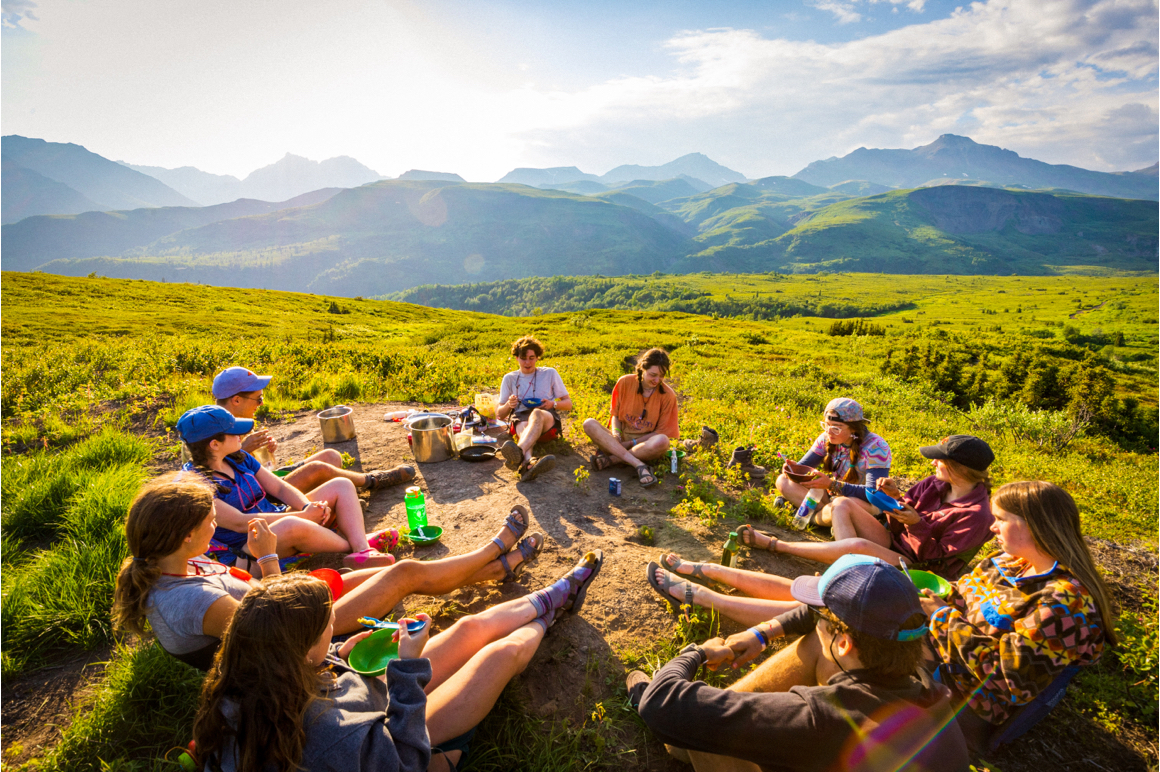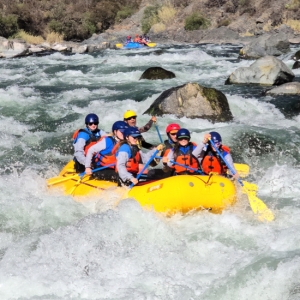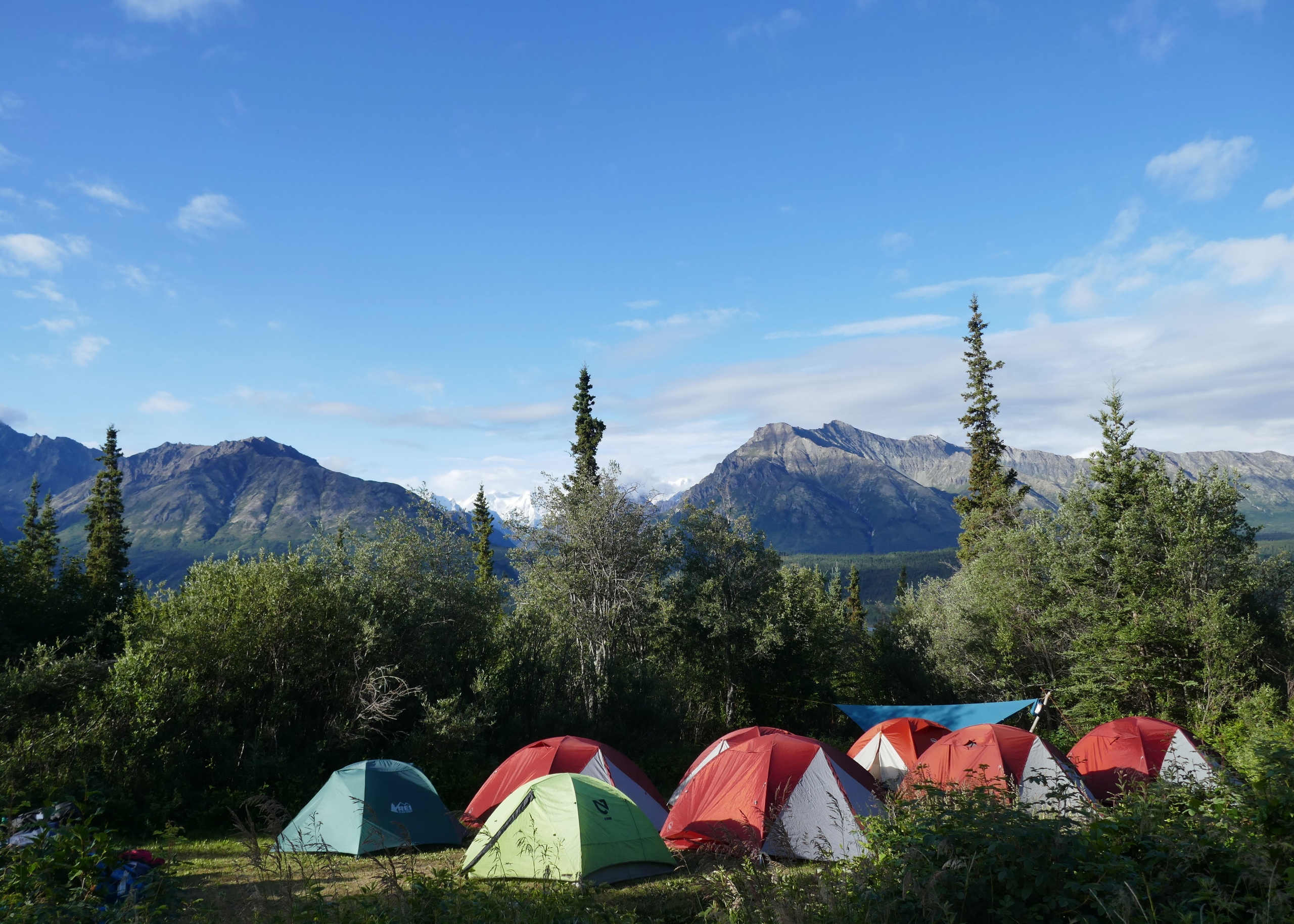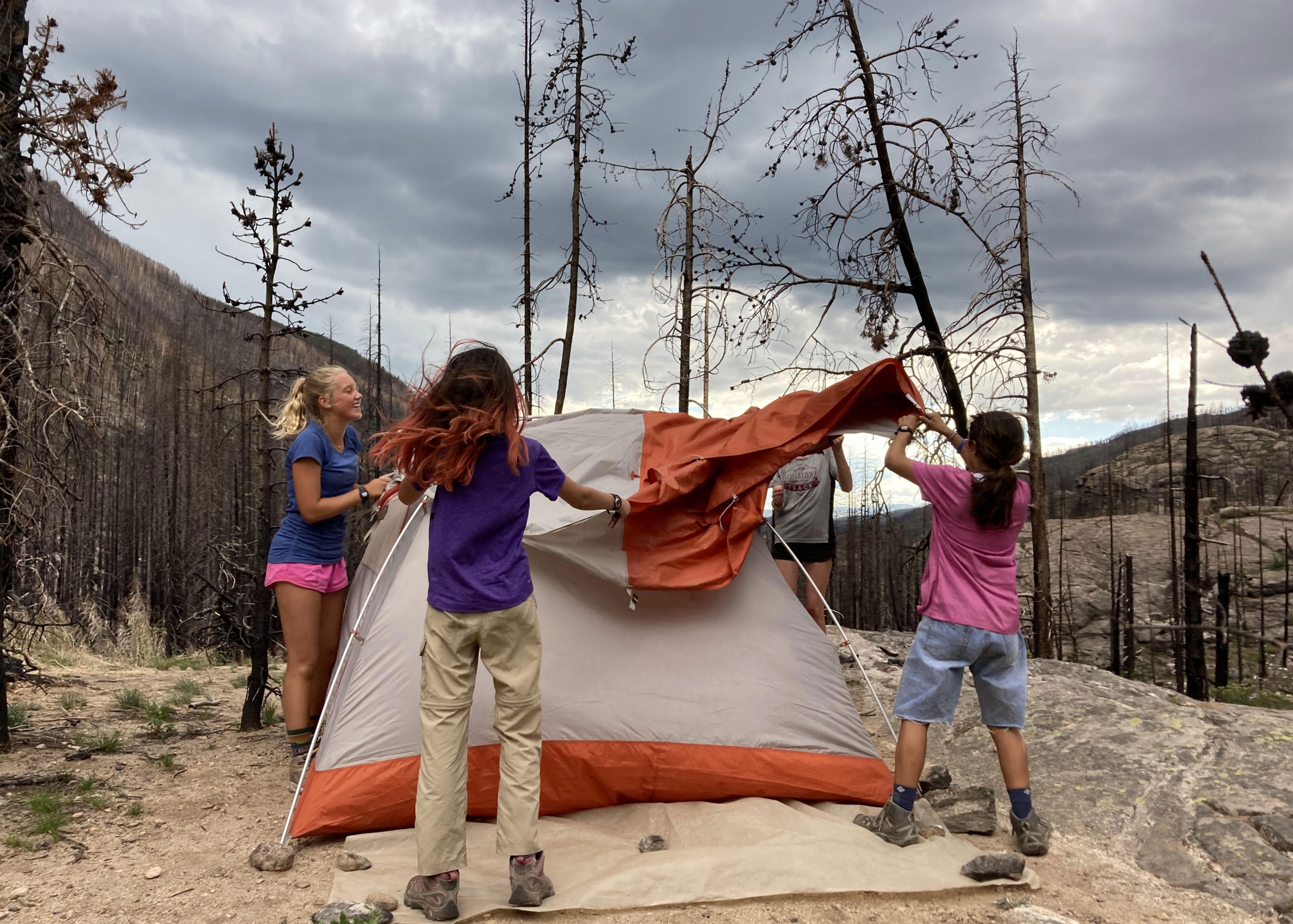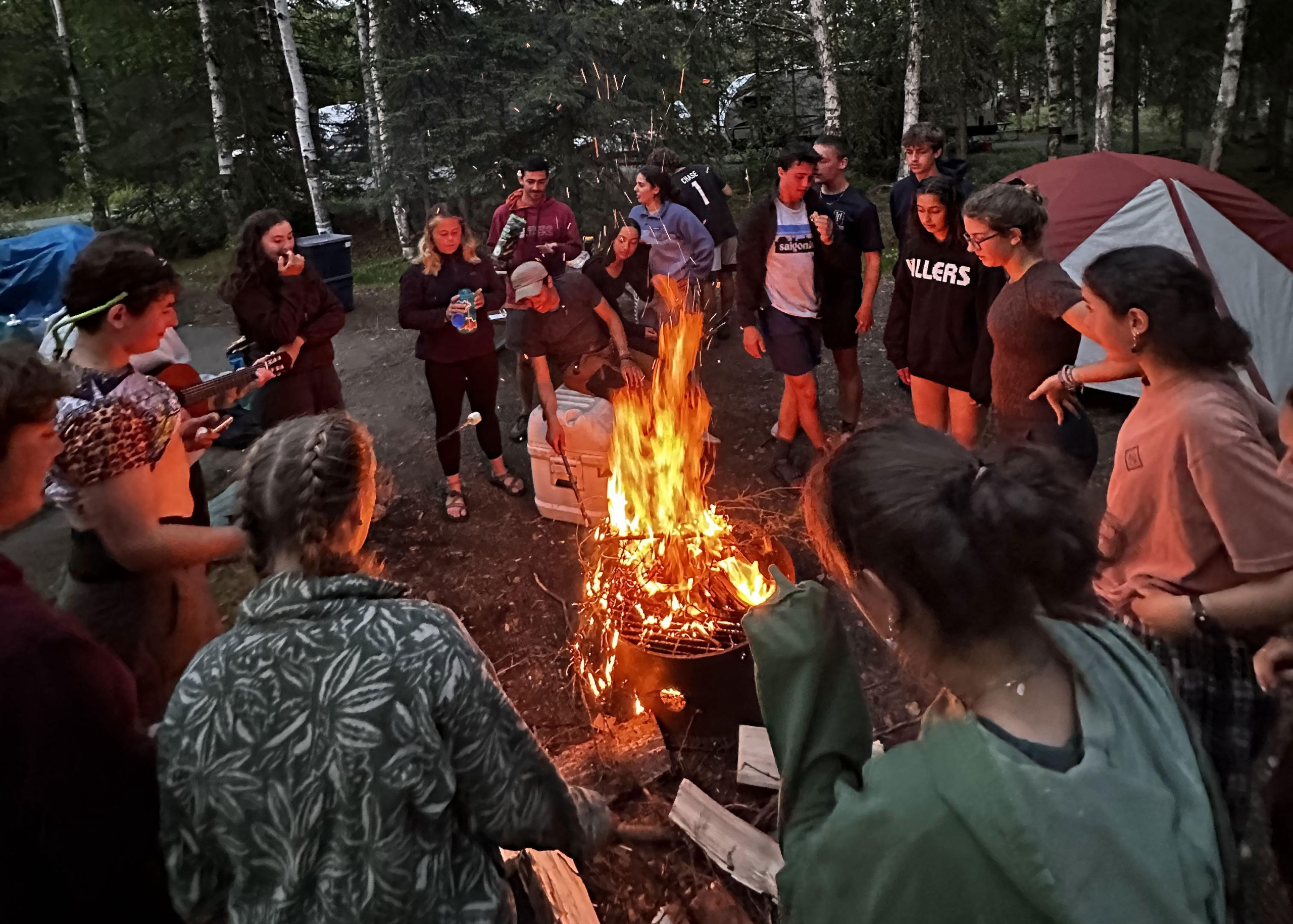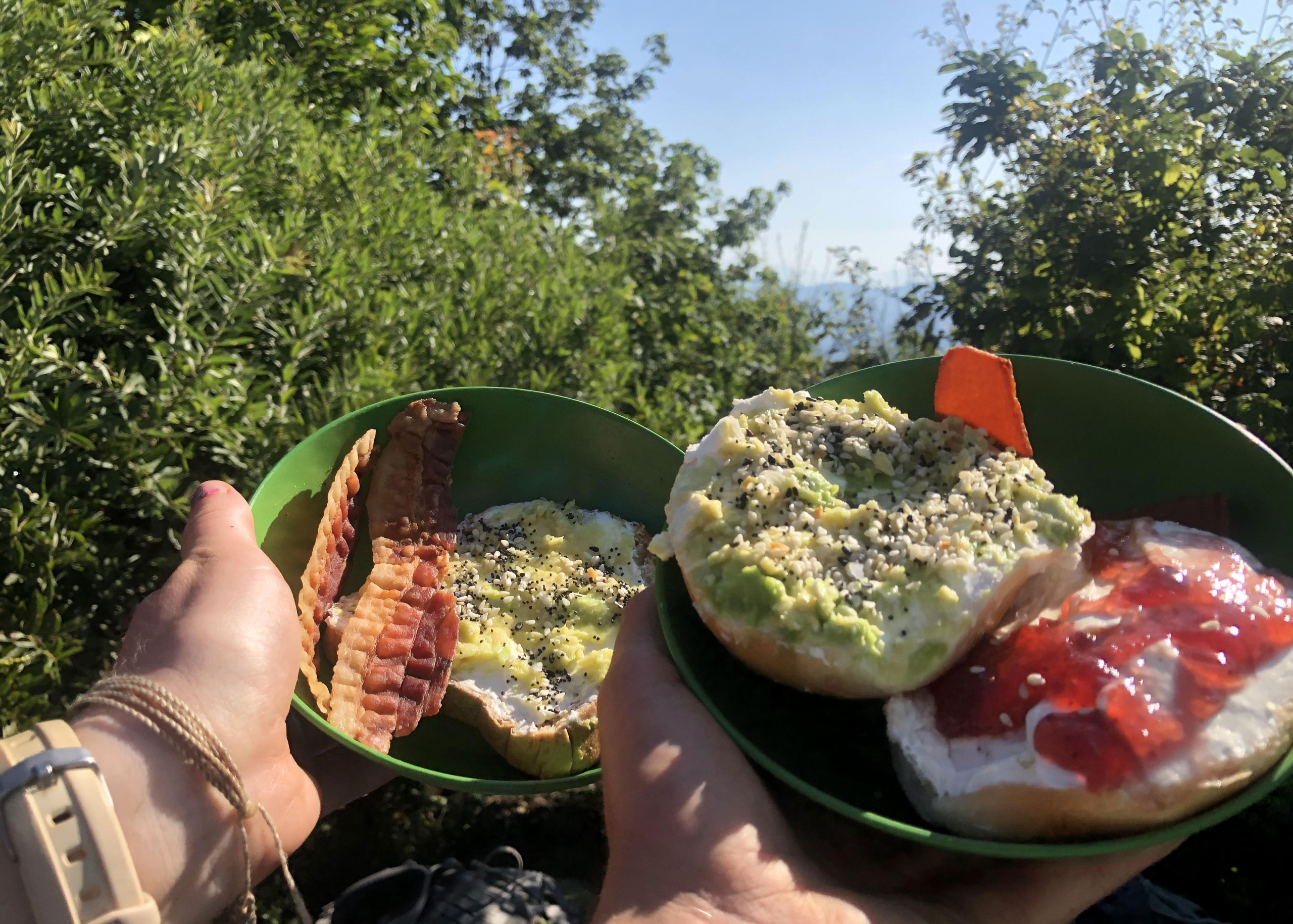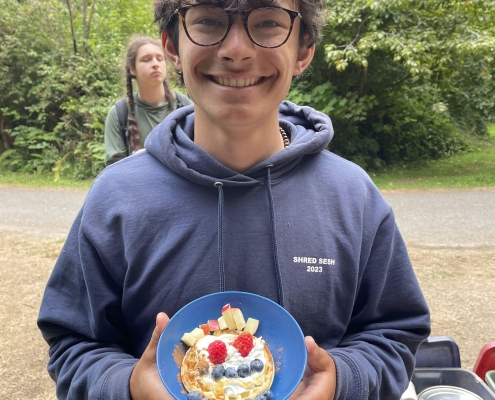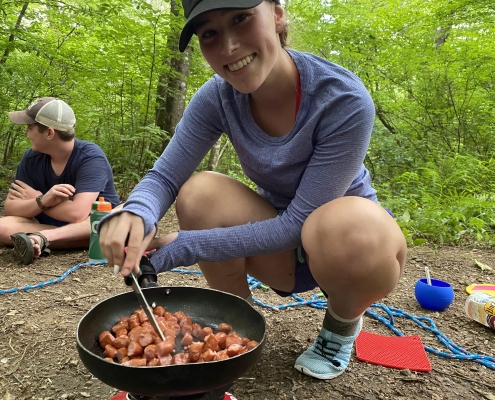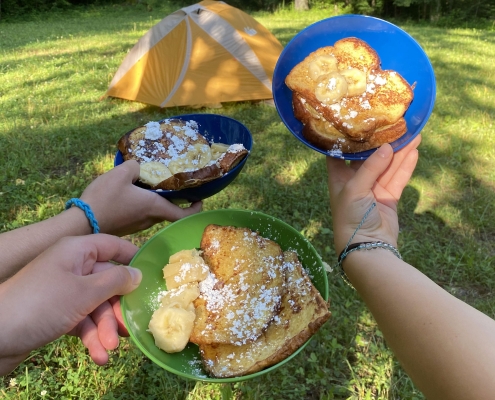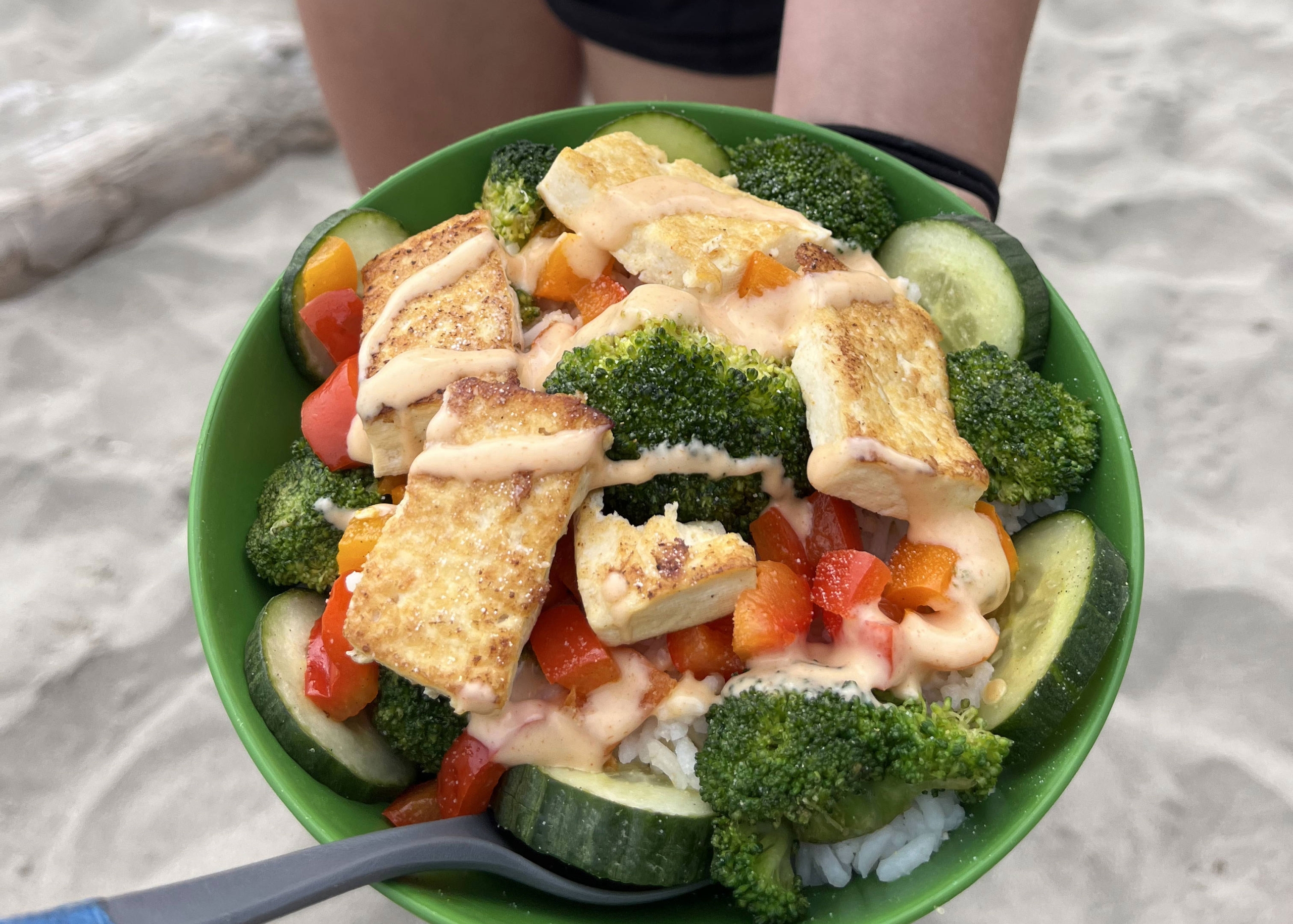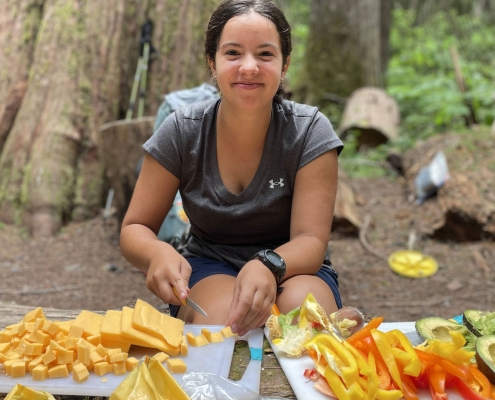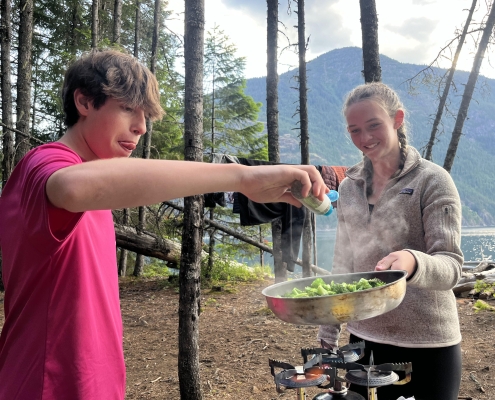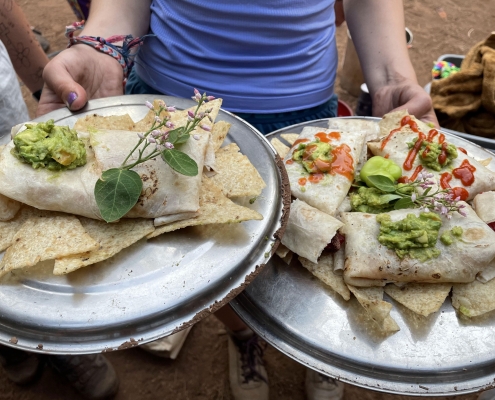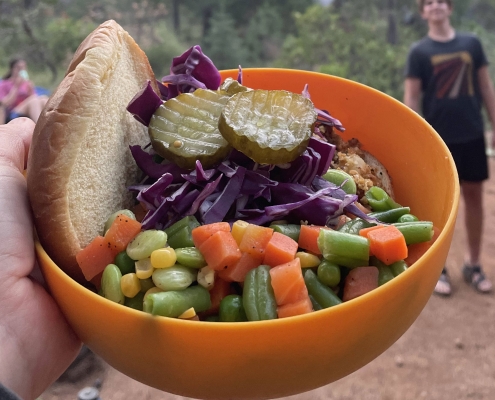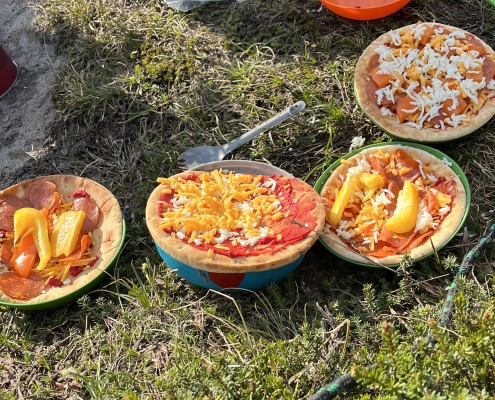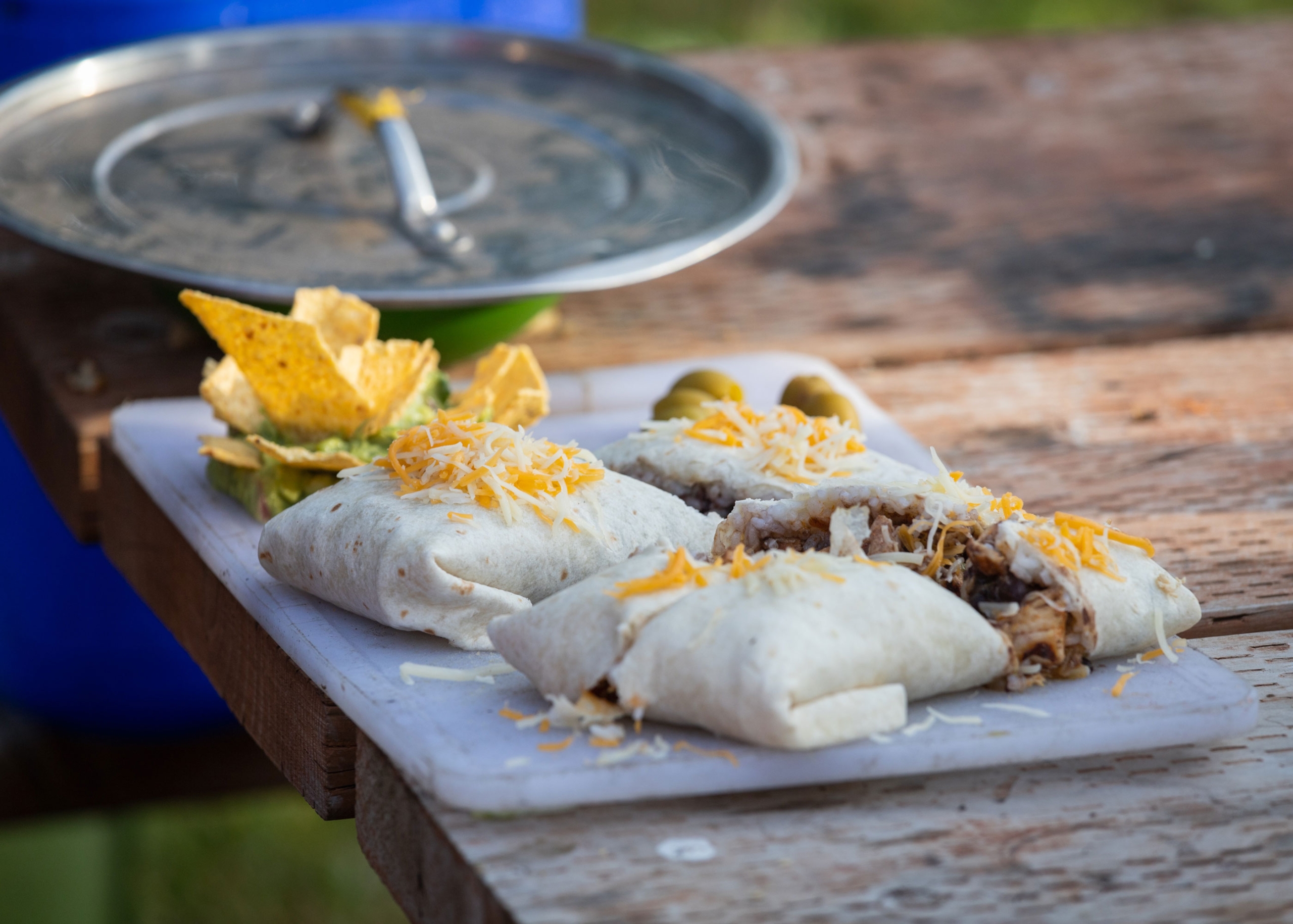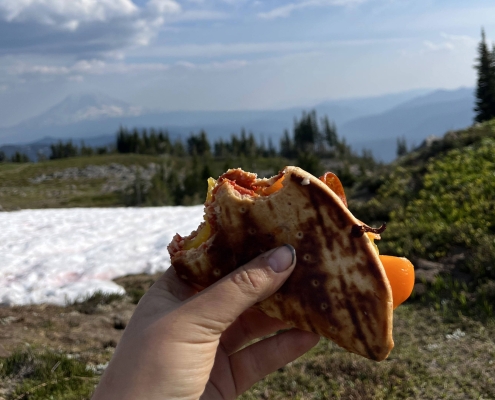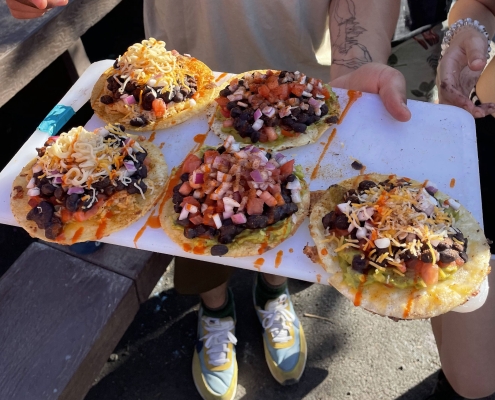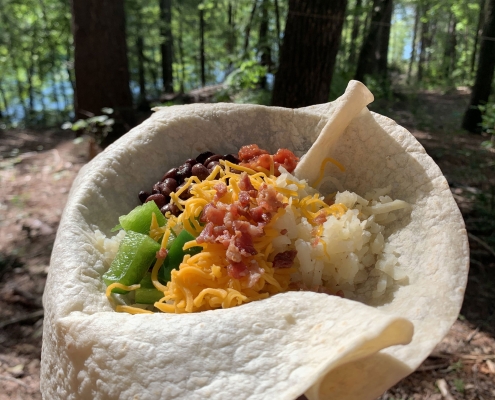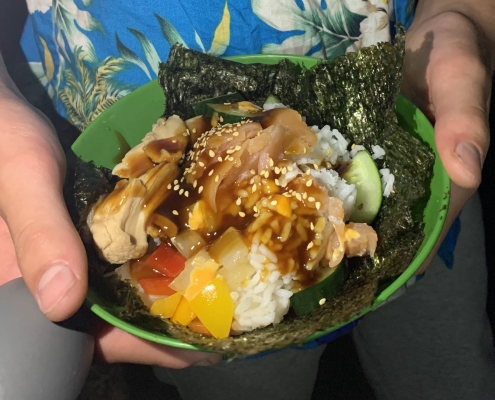Delicious, filling food!
Even though we camp in tents every night and cook over backcountry stoves, we still maintain good hygiene and eat INCREDIBLE food throughout the entire trip—no matter where we are!
We include protein in every meal, we have fresh fruits and vegetables as often as possible, and we always have “seconds” (and often thirds) for our hungriest students. Meals are served buffet-style, with everything prepared separately and condiments served on the side. Students can “choose their meal adventure” as they go through the buffet line, and we all sit in a circle as we eat. In addition to three meals a day, we always have a wide variety of snacks available throughout the day.
We can accommodate vegetarians and many food allergies and dietary restrictions, including peanuts, tree nuts, soy, dairy, sesame, and gluten. Throughout the trip, our staff will work hard to prevent cross-contamination for those with food allergies (though in our basic outdoor kitchens, this can never be 100% guaranteed). It is also important that students take responsibility and an active role in managing their allergies and dietary restrictions along with our instructors, including reading ingredients labels, avoiding foods with a known allergen, and seeking help from an instructor if needed. Our instructors carry EpiPens and are trained to respond to allergic reactions.
While we ask that the students not bring food, candy, or gum to Adventure Treks, students with celiac disease or other highly restricted diets may bring packaged food or snacks from home. This is in case we can’t find a particular brand in the smaller, more remote grocery stores with limited selections.
Adventure Treks may choose to operate a trip free of a particular food (peanuts, tree nuts, etc.) due to student allergies.


